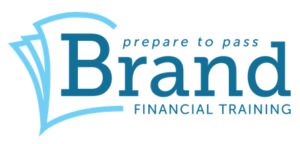A loan trust is a useful Inheritance tax (IHT) planning tool and can be tested in any of the CII’s AF1, J02, R06 and AF5 exams. In this article, the Brand Financial Training team look at their main features.
As the name suggests, with a loan trust, the investor (settlor) loans money into a trust. The original loan can be accessed by the investor at any time but they forego their right to future growth on the investment which sits outside of their estate for IHT purposes. The IHT benefits are therefore more gradual than outright gifts however for indivdiuals who have a potential IHT problem but cannot afford to give up the access to their captial, a loan trust can be a very useful tool for IHT planning.
Setting up a loan trust
The first step is the creation of the trust, usually a discretionary trust. The settlor of the trust is a trustee and at least one other trustee would be appointed to deal with the trust after their death.
Once the trust is established, a loan agreement is set up and the settlor makes an interest-free, repayable on demand, loan to the trustees.
Finally, the trustees invest the money. Typically, the money is invested in an investment bond as they are non-income producing assets and 5% tax deferred withdrawals can be taken to allow for regular loan repayments to the settlor without any immediate tax charge thereby creating a tax efficient ‘income’. If more than 5% is taken from the bond this may lead to income tax complications for the settlor as this would be a chargeable event.
IHT implications
As the initial transfer is a loan rather than a gift, there is no transfer of value for IHT purposes.
As the investment bond is held within the trust, any growth is outside the settlor’s estate and is held for the ultimate beneficiaries.
If, when the settlor dies, there is an outstanding loan amount, this will be repaid and will form part of the settlor’s estate for IHT purposes.
Whilst a discretionay trust is generally used, loan repayments do not incur an IHT exit charge. In addition, at the point of the 10 year periodic charge, any outstanding loan is deducted from the value of the trust.
Benefits of a loan trust
The main advantage of using a loan trust is that future growth on the investment is outside of the settlor’s taxable estate, but the settlor has piece of mind that they can access the original loan should they need it. So, if their cost of living increases or personal circumstances change and the settlor requires their money back, they can ask the trustees for the money at any time and the trustees must comply.
Drawbacks of a Loan trust
The downside of a loan trust is that the loan is a debt on the settlor’s estate and must be paid back on their death and will be added back into the estate for IHT purposes. If death is relatively soon after making the loan, there will be very little in the way of IHT saved.
Also, if the settlor survives for over 20 years and all of the 5% withdrawals have been made so the capital has been returned, the settlor’s income stream stops and any remaining capital in the investment bond cannot be accessed because this now belongs to the trust.
One further point to consider is that if the settlor does not spend the loan repayments, then their estate is increased by the return of the capital.
Giving up the loan
If the settlor no longer requires access to the original capital, they can give up the right to some or all of the loan at any point. They can waive the right to the loan in favour of the trustees, or to another person allowing that recipient to have the same right to demand payments from the outstanding capital. Either way, this will be a transfer of value for IHT purposes.
Example: Archie took out a discretionary loan trust 8 years ago for £200,000 which was invested in an offshore investment bond. He has taken income of £10,000 each year and the investment bond is now valued at £300,000. Archie has decided that he no longer requires the capital and is considering waiving the oustanding loan in favour of the trust so he can save more IHT on his death.
As all the ‘income’ taken was within 5% of the orginal investment there was no immediate tax liability on the withdrawals.
Should Archie die, the growth of £100,000 would be outside of his estate but the outstanding loan value would be included in his estate for IHT purposes; this would be £120,000 calculated as the original investment less the 5% withdrawals taken.
If Archie decides to waive the right to the loan in favour of the trust, and if he has not made any previous chargeable lifetime transers (CLTs), the value of the oustanding loan of £120,000 is a CLT but as this falls within his nil rate band there will be no immediate IHT to pay.
Summary
The maximum IHT benefit from a loan trust comes after the loan has been fully repaid. This will be after 20 years if 5% has been repaid annually. However, once the loan has been repaid the settlor has no further access to the trust fund.
About Brand Financial Training
Brand Financial Training provides a variety of immediately accessible free and paid learning resources to help candidates pass their CII exams. Their resource range ensures there is something that suits every style of learning including mock papers, calculation workbooks, videos, audio masterclasses, study notes and more. Visit Brand Financial Training






























